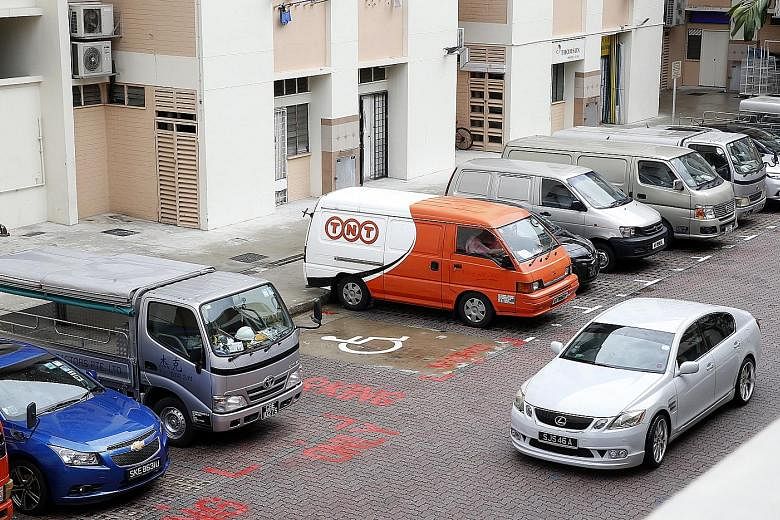Across Singapore, there are at least 6,000 government-run handicapped parking spaces. But this is hardly keeping pace with rising needs as the country rapidly ages, says the community of people with disabilities.
The number of new carpark label holders alone stood at 1,758 last year. This is up 38 per cent from 1,273 in 2012, according to Ministry of Social and Family Development (MSF) figures.
This means an increasing pool of people are entitled to park at these spaces, which are 11/2 times wider than normal spaces and are usually nearer to the lifts.
The issue of these carpark spaces came under the spotlight after the MSF last month tightened the eligibility criteria, prompting an outcry.
MSF said the reason for the new benchmark - which eliminates crutches and quadsticks as criteria - was "to ensure that those who require the use of accessible lots the most can be better assured that these lots will be available when they need them".
It later clarified it will consider the applicant's medical condition regardless of the mobility aid used.
The Ministry of National Development (MND) said there are now 6,000 accessible spaces in the carparks managed by the Housing Board, Urban Redevelopment Authority and National Parks Board.
MND said it was unable to determine if this number has increased over the years. It was also unable to give the total number of accessible carpark spaces, including those that are privately run.
But it told The Straits Times that the Building and Construction Authority (BCA) is looking at the requirements for accessible spaces in carparks as part of an ongoing review of its Code on Accessibility 2013.
The code states that in every car- park, there must be one accessible lot in the first 50 spaces, one more for the next 50 spaces and then one accessible lot for every subsequent 200 spaces or any part thereof .
But getting there is still a work in progress - whether for the public or private sector.
For instance, property manager AsiaMalls said three out of four of its malls follow current BCA regulations. In Tiong Bahru Plaza, there are four accessible lots out of 337 spaces in total. But at Hougang Mall, which was built before 2013, there is just one such space out of 153. The situation is being reviewed.
Sometimes, public carparks fall short too.
Last year, Ms Shee Shu Xin, 35, a volunteer with SPD, an organisation that supports people with disabilities, wrote in to HDB when she found that the open-air carpark near her block in Sin Ming did not have an accessible parking space. Now, the carpark has such spaces.
President of the Disabled People's Association Nicholas Aw said that there are still places where the minimum number set by BCA is not met, and the problem should be rectified.
Beyond the current guidelines, some feel that the rules should be changed to provide for more.
Ms Judy Wee, 56, who is the vice-president of Disabled People's Association, felt the BCA's code should require one accessible space in every 50 regardless of the total number of spaces.
Mr Richard Kuppusamy, 40, a committee member of Handicaps Welfare Association, said one in every 50 is still too few. "In Britain, it is one in every 20 lots. Yes, there is land scarcity in Singapore, but in multi-storey carparks, the footprint is the same. There could be so many more accessible lots built."
The United States federal government mandates one accessible lot for every 25 parking spaces.
Others felt that aside from increasing the number of spaces across the board, certain "hot spot" areas should have a higher proportion of accessible spaces.
Ms Shee suggested that specific places such as hospitals would benefit from more spaces. She said that in the sheltered carpark at Tan Tock Seng Hospital, there were about five accessible spaces. "It is ironic that when I go to hospitals, I can't find lots. Even though there are more accessible lots there, there are also more people who need it."
She added that the government has to assess supply and demand, as there cannot be so many accessible spaces that it will end up depriving able-bodied drivers of parking lots that they also need.
"We can speak up and let the authorities know (where to focus on) so they can add more lots in that area," she said.


